Giving Barnard His Due
11/20/2022. On the previous page I went on about William Frederick Denning. Edward Emerson Barnard did not come off particularly well, which is a shame because E.E. Barnard, a Nashville photographer turned California astronomer, was a wonderful observer. To pick a few examples: he made the last visual discovery of a planet or moon in the solar system (Amalthea, Jupiter V); his photographs of dark nebulae revolutionized astronomy's understanding of the extraordinary prevalence of soot, dust, and gas wafting around in the heavens unlit; he discovered comets and several new nebulae. Among that last category is a tiny, brilliant, damn-near-invisible cloud tucked into the Pleiades adjacent the star Merope.
In "On the Nebulosities of the Pleiades and on a New Merope Nebula," E. E. Barnard described the bauble that would become IC 349 in Dreyer's Index Catalog. (The original paper is linked down below, but I want to maunder on about it some more first.) Here are the Pleiades and their associated nebulosity -- Tennyson's swarm of fireflies caught in a silver braid. The Pleiades is a young cluster of bright stars which has wandered into an otherwise dark cloud of dust and gas in Taurus:
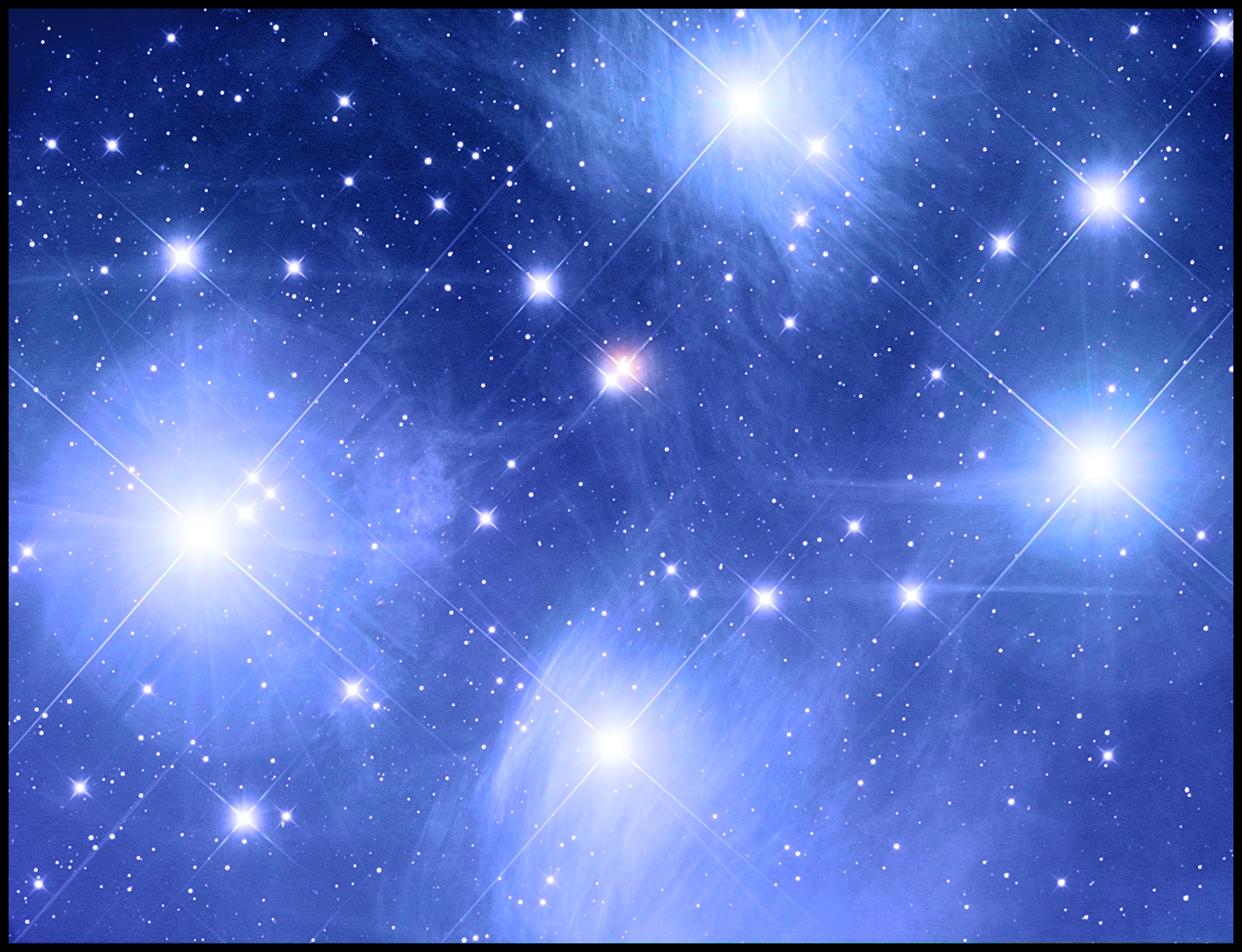
Four, maybe five of the Seven Sisters
150x60s L, 20x180s R, 20x180s B, synthesized G
Make it big; you know you want to.
The star at the bottom of that photo is Merope, a "blue-white subgiant" almost 1,000x as bright as the Sun with a surface so hot that much of the light it emits is blue, violet, and ultraviolet. A broad fan of light, slightly redder than the rest of the Pleiades nebulosity, extends southward and is easily picked up in binoculars or a widefield eyepiece. That is not what modern-day observers refer to as the Merope Nebula though it is sometimes still called that. Here's a photo which shows off Barnard's Merope Nebula overlayed at the same scale:
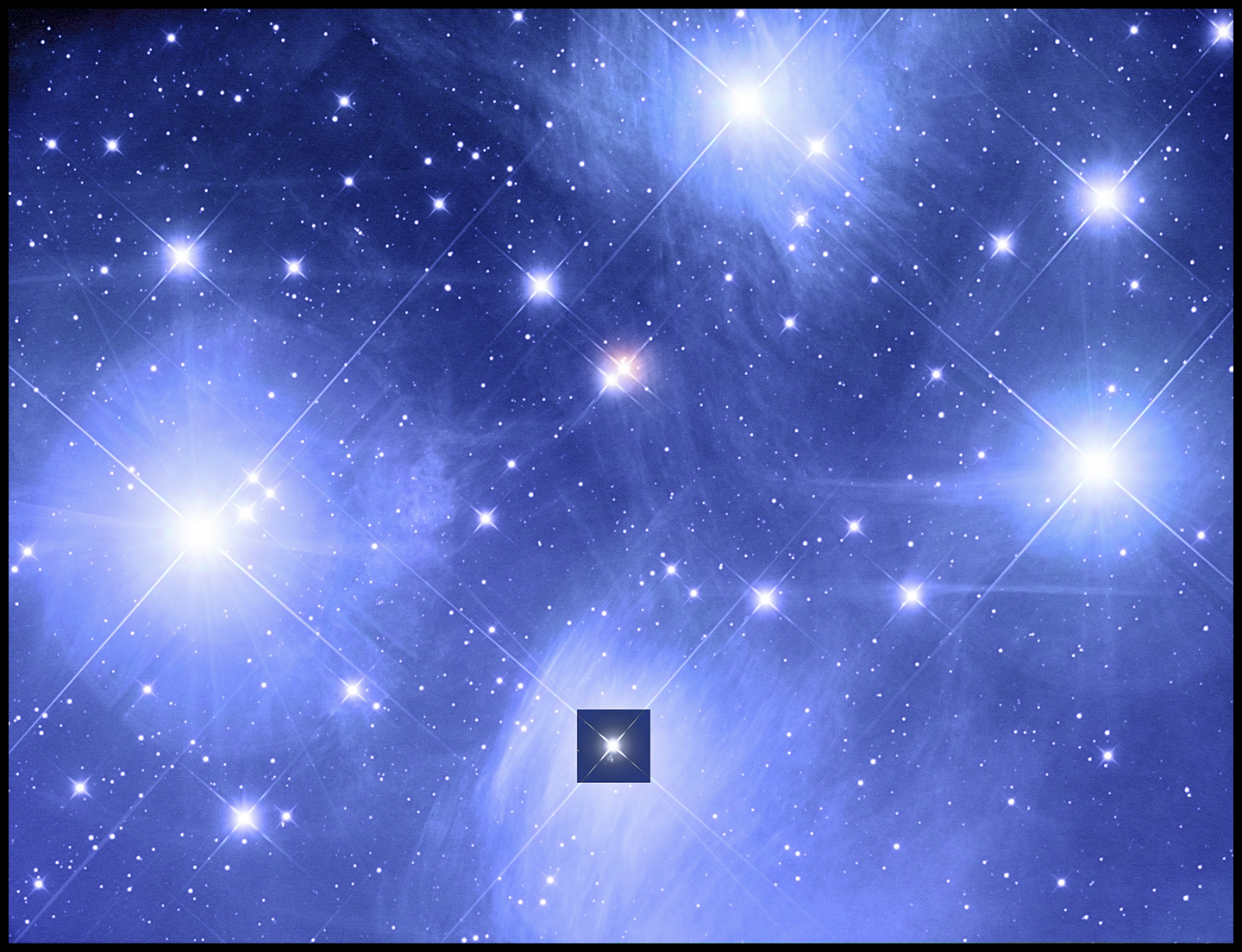
The inset is 500 x 10s exposures in L.
If you don't make it big, you won't see a thing (and even if you do, you won't see much).
Here, enlarged several times from the original scale, is a closer view of Merope and the nebula Barnard discovered in 1890:
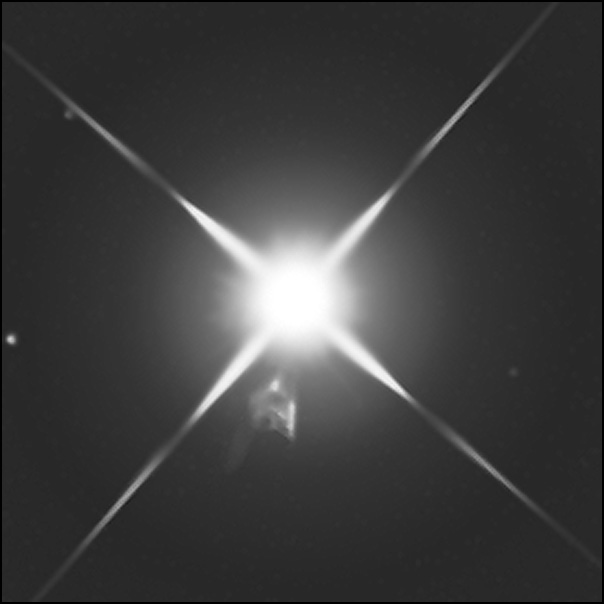
500 x 10s exposures in L. I made a radial mask by spinning Merope and
used that to nullify the glare of the star to help reveal the nebula. CompSci rocks.
Barnard began his announcement by surveying some of the streaks of nebulosity shown in contemporary photographs by "the Henry Brothers and Mr. Roberts, etc." describing their appearance through Lick Observatory's 36-inch Alvan Clark refractor. When he comes to Merope, he writes, "The large diffused Merope Nebula, which was orignally discovered by [Ernst Wilhelm Leberecht] Temple in 1859, was seen as a hazy glow although the field was only 5 minutes in diameter... On Nov. 14 while examing [sic] the cluster, I discovered a new and comparatively bright round cometary nebula close south and following Merope, every precaution was taken to prove that it was not a ghost of Merope by examining the other stars of the group under the same conditions. I have since seen it several times and on Dec. 8th I could see it with some difficulty in the 12inch by occulting Merope with a wire in the eyepiece. With the great telescope the nebula can be seen fairly well with Merope in the field and is conspicuous when the star is placed just outside the north edge of the field. It is about 30 seconds in diameter, of the 13th magnitude, gradually brighter in the middle, and very cometary in appearance. It was examined with powers of 300, 520, and 1500 with all of which it was comparatively easy. Mt. Hamilton 1890 Dec 10."
The original paper includes some sketches and more measurements and concludes, "It can be readily understood why this, the brightest of all the Pleiades Nebulae, has never been photographed. A sufficiently easy exposure to secure an impression of the nebula would so overexpose Merope that its light would coalesce with that of the nebula."
Yeah, well, EEB didn't figure on a 130 years of imaging progress, CCDs, CMOSs, orbitting observatories, and obsessed backyard amateur astronomers with 10-inch astrographs and backgrounds in computer science.
It turns out that IC 349 is not at all cometary; it is not something evaporating under the blaze of nearby Merope. It is just a wandering cloud of particulates being separated mostly by the differential pressure of Merope's starlight (and maybe by its stellar wind). It shows a distinctly non-cometary structure even in my efforts.
If you want some recent skinny on IC 349, here's a good sample. It's from the Astronomical Journal, June 2001, and includes Hubble imagery of Barnard's "new Merope nebula."
11/22/2022. The question came up: what about that very red star in the center of the Pleiades? I always assumed it was a line of sight interloper, but when I went looking for literature about it, I found instead a surprising claim: a substantial part of the cluster's mass is made up of faint, cool, red stars. Really? There are supposedly as many as 3,000 stars in the cluster, including several hundred within the central bits, and many if not most of them are red. Really? Only the few brilliant named Pleiads are the bright blue, B-type giants that the eye says dominate the cluster.
So I remembered those 20 red and 20 blue 30-second exposures in the can from the other night. What if I worked them up, taking care to keep the color accurate and concentrated on the stars rather than on stretching like mad to get the nebulosity (see far, far above)? The big stars are blue-white (check!); the nebulae are bluer owing to reflection of that light and Raleigh scattering (check!); the diffraction spikes show a good balance of rainbow hues (check!); the broad fan of nebulosity extending well south of Merope (bright star at center) tends toward warmer hues (check!); and the double star at top (which includes the red star near the center of the cluster) looks right. So, given all that, I boosted saturation 20-30% without changing the balance and got this:
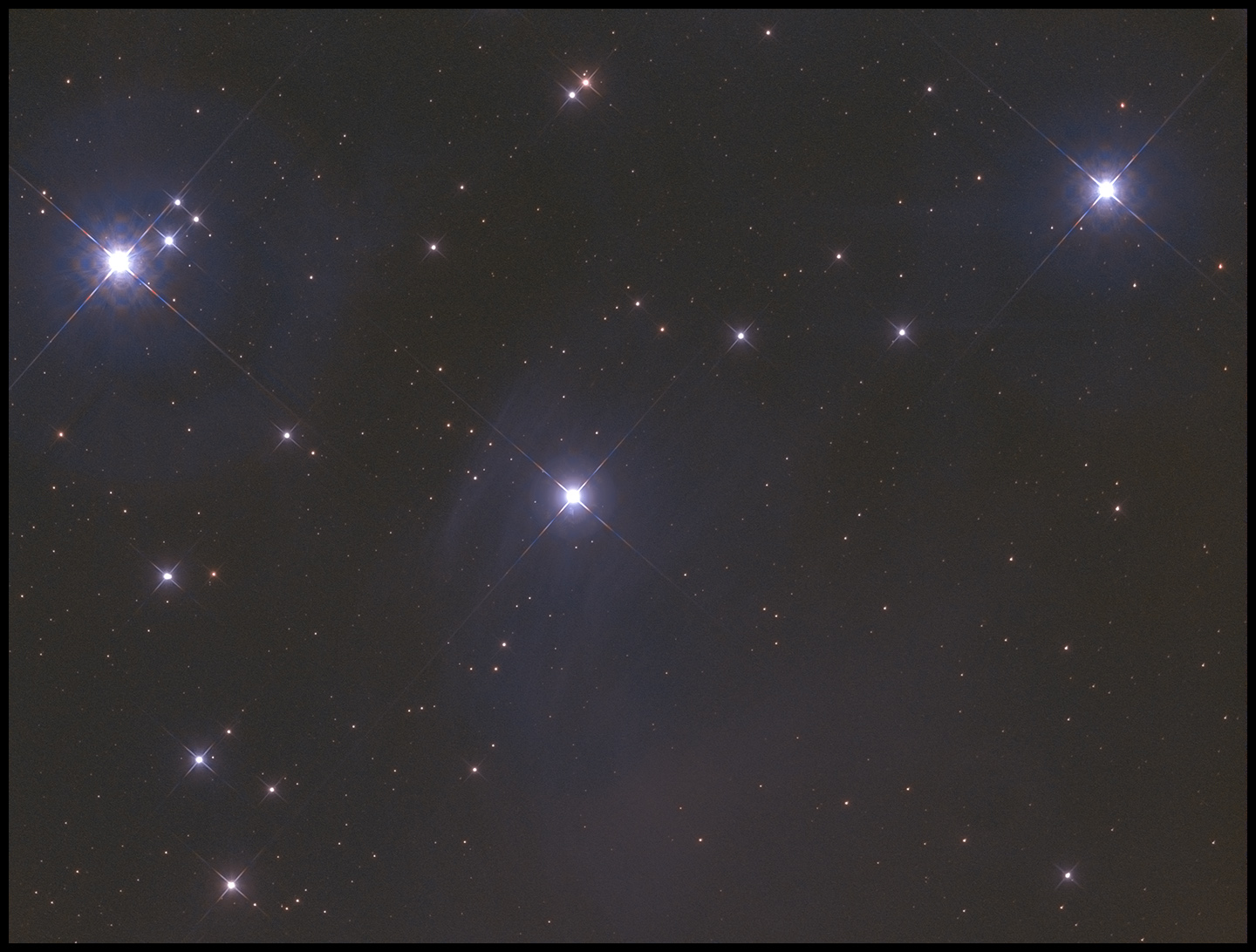
20 x 30s Red + 20 x 30s Blue
Radial mask again applied around Merope
If you'll click that picture to make it big, you'll see that a great many of the field stars are, in fact, red. Who knew?
BTW, I also collected some H-a data to see if IC 349 lit up in the light of Merope the way IC 63 does in the light of Caph. It does not, as you'd expect if the Taurus molecular cloud is predominantly dust (graphite and silicates -- see technical paper linked above) rather than cold gas.
And not that anyone's asking, but I couldn't resist working up a color close-up of IC 349. A Hubble image shows that surfaces directly facing Merope have reddish fringes, but otherwise the nebula simply reflects the star's bright blue light. No one should be surprised that I did not get anything like that kind of resolution. This is the luminance data above plus the RsGB data. It's not spectacular, but it's mine:
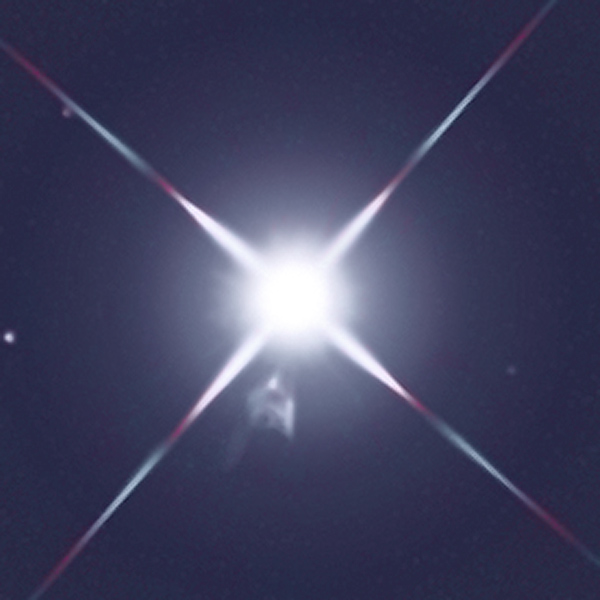
:: top ::
|